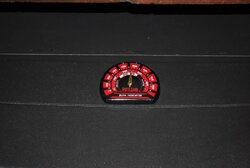Before purchasing our Hampton HI300 wood insert, we had read many reviews singing it's praise. We have a brand new unit, in a house which is about 1700 sqare feet, 900 on the bottom and slightly less upstairs. In the room where the insert is, we both imagined, and heard from friends, that it would be like 85 degrees. It just isn't throwing as much heat as we thought. Let's eliminate the obvious, we are burning very seasoned wood. When I'm home constantly during the day, we can keep the downstairs at about 75, and I'm adding wood quite frequently. As soon as we have only red coals, it seems to cool right down. HELP


 Also, the handle that adjusts the air flow rattles, don't you think that for $4200 installed it should rattle like a tin can?
Also, the handle that adjusts the air flow rattles, don't you think that for $4200 installed it should rattle like a tin can?



 Also, the handle that adjusts the air flow rattles, don't you think that for $4200 installed it should rattle like a tin can?
Also, the handle that adjusts the air flow rattles, don't you think that for $4200 installed it should rattle like a tin can?

 Good luck!
Good luck!